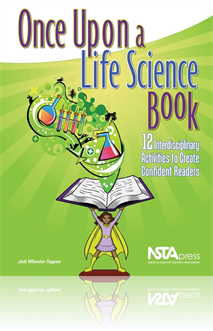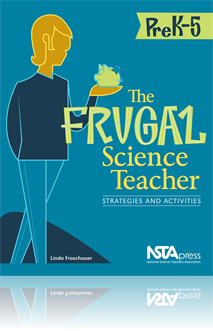All Resources
Book Chapter
The lesson in this chapter is designed to open a unit on cells and cell parts. In the exploration, students will view plant, animal, and bacteria cells through a microscope while looking for the answers to their own questions about cells. The reading...
Book Chapter
The basic ideas in this chapter are simple. The cell duplicates important parts (including DNA) and then divides in half. Students often find the topic of cell division difficult because they become bogged down in the immense vocabulary associated wi...
Book Chapter
All animals have some form of a skeleton. Fish, amphibians, reptiles, birds, and mammals have an internal skeleton, made of bones or cartilage. Arthropods have a stiff internal skeleton. Worms and other soft-bodied invertebrates have a hydrostatic sk...
Book Chapter
This chapter focuses on the relationship between genes and alcoholism. Examining this relationship can help students make wise choices about drinking, and it also can help them gain a wider perspective on genetics—a perspective that can help them u...
Book Chapter
Materials Repurposed: Find a Wealth of Free Resources at Your Local Recycling Center
By looking at the function and purpose of any piece of equipment, a creative teacher can find a suitable replacement for many premade science materials, sometimes from the most unlikely places. This chapter features a few of the recyclable items the ...
Book Chapter
A New Challenge for Science Education Leaders: Developing 21st-Century Workforce Skills
Contemporary justification for a vision of improved science education resides in themes such as education and the economy, basic skills for the workforce, and thinking for a living. Such themes differ from earlier justifications such as the space rac...
Book Chapter
The authors argue throughout this book, meaningful, lasting change in the quality of secondary science is going to depend on what teachers do for themselves. This book, thanks to the amount of formal and informal input we have had from secondary scie...
Journal Article
Special clothing is worn by “community helpers” such as police officers, nurses, firefighters, cafeteria workers, dentists, and waste management workers as they do their jobs. The special clothing allows workers to be safe. Therefore, exploring h...
Journal Article
Everyday Engineering: What makes a better box?
Every morning, many Americans start their day with a bowl of cereal. Some spend time while they eat breakfast reading the back of the cereal box, but few consider its size, shape, and construction, or realize that it was designed by an engineer. This...
NSTA Press Book
The Frugal Science Teacher, PreK-5: Strategies and Activities
Teachers of all grades and disciplines often dip into their own wallets to outfit their classrooms with materials and supplies that school and district budgets can’t—or won’t—cover. Science teachers tend to find themselves supplementing their...
Journal Article
Unit Pages: Differentiation for 200 Students
Based upon the models of differentiated instruction (Tomlinson and Edison 2003) and Layered Curriculum (Nunley 2004), the author the Unit Pages strategy. Just like Layered Curriculum, the pages can be handed directly to students, allowing them to tak...








